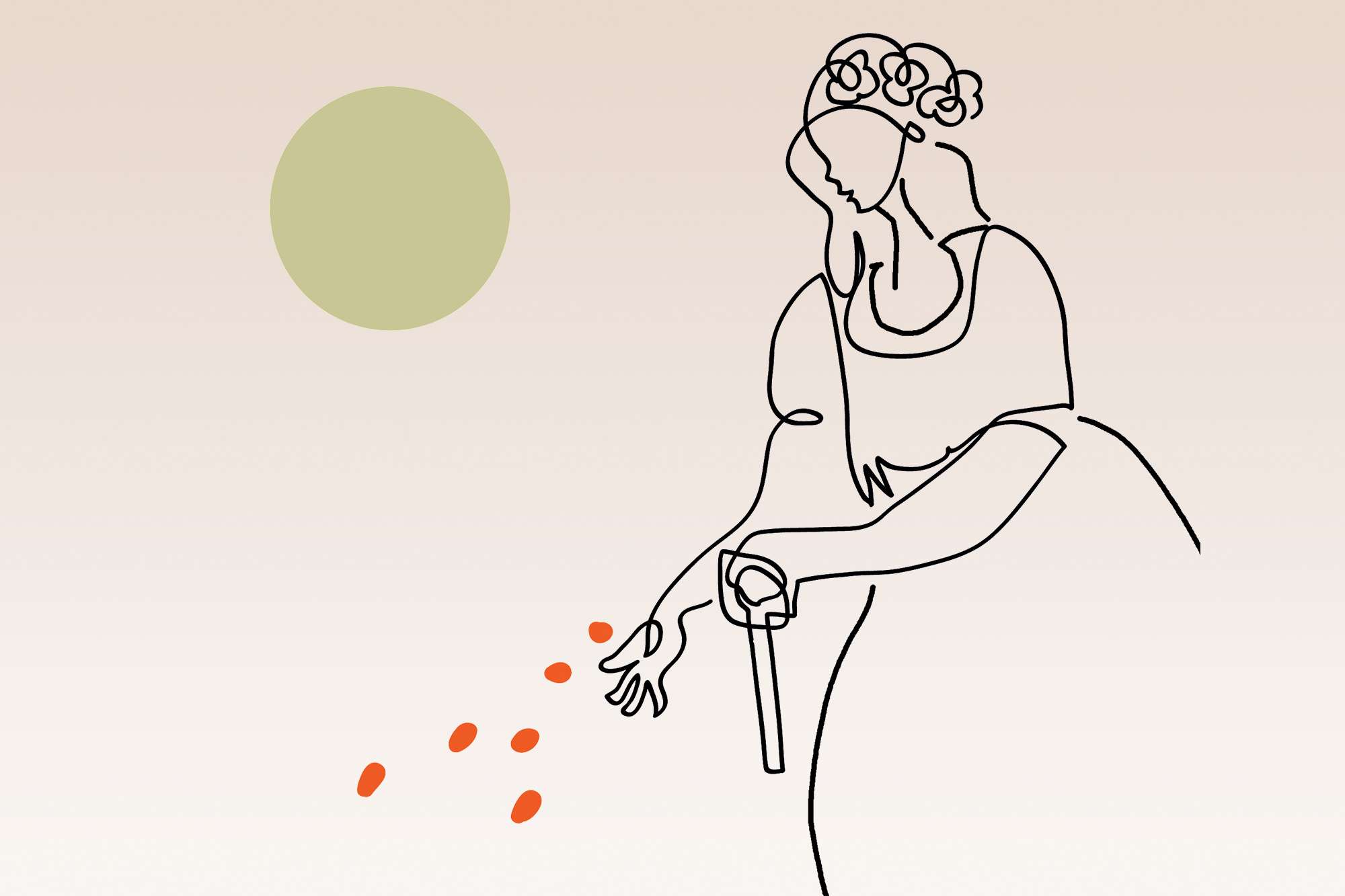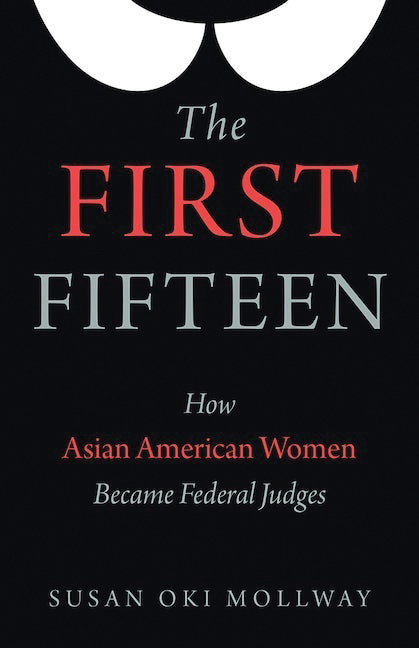The First Fifteen
by W K Hastings
Vol. 107 No. 1 (2023) | Toward Fairer, Quicker, Cheaper Litigation | Download PDF Version of Article
This is a book written with generosity and bravery.1
It is generous in the sense that 15 Asian American women have decided to share their stories about how they became Article III judges. As the “first 15” Asian American women to do so, they broke new ground. It is brave because their narratives are personal journeys and reveal sometimes quite intimate facts. These judges are to be congratulated for realizing the significance of putting their histories into the public domain. Without these stories, many might not think of themselves as judge material, leaving the bench a less rich and diverse place than it otherwise could be. With these accounts, the path to becoming a judge is clearer, although still strewn with obstacles.
Judge Susan Oki Mollway, the first of the first 15, begins by setting the scene. In 1998, when she was appointed, 51 percent of the American population was female, 8 percent was Asian, and there were no Asian American women judges. Until recently (and at the time of the book’s publication), proportionality would have required Asian American women to occupy more than twice the number of Article III judgeships they currently do. Judge Mollway makes the point that the struggle for representation is of course a broad one — African American women, Latinas, and LGBTQI+ groups have seen disproportionately lower rates of appointment to Article III judgeships, which are still 73 percent male and 80 percent white. The journeys of the first 15 Asian American women to hold Article III judgeships must be seen in that context.
With one small exception, this book is not about being a judge; it is about becoming a judge. Judge Mollway shows us how these 15 women navigated that path. This is a sensitive area that few have written about, and its coverage makes a significant contribution to both outsider and judicial scholarship. Writing about that path also requires courage, since it exposes not just those who may have helped or hindered the journey, but also personal details about the judges themselves. Writing about the journey to becoming a judge can be costly,2 but it is a welcome exercise — it lets light into a process that can be opaque and political.
The stars of this book are the judges. This includes Judge Mollway, who has written about herself and the other judges with humility and restraint. Her style of writing lets the judges’ accomplishments speak for themselves. Except for her own story, each account is told in the third person by Judge Mollway, not in the first person by the judge concerned, and the writing strips away adjectives, superlatives, and any hint of self-promotion. Most of the judges, we learn, were at first reluctant to participate in the research but came around — partly because of the book’s significance, partly because of the structure of the interviews, and in large part as a result of Judge Mollway’s superb skills of persuasion.
Each story is as fascinating as the next. One judge, a child during the fall of Saigon, was literally tossed over an airfield fence in order to escape. Another left Vietnam in a small fishing boat with a hundred others on board. Other judges were born in the United States to parents who had overcome hardships — a mother who walked from North to South Korea; another whose husband was murdered; still others who immigrated to America with limited English-language skills.
Judge Mollway also addresses how these judges navigated the nomination process, which often resurrects things a judge said or did during their time as a lawyer or as a student. Judge Mollway, for example, was the editor-in-chief of the Harvard Civil Rights-Civil Liberties Law Review while in law school, and was subsequently on the board of directors of the Hawaii chapter of the American Civil Liberties Union (ACLU) at a time when the legalization of same-sex marriage was a hot issue. Another of the 15, Judge Lucy Haeran Koh, was one of the “Griswold 9” who participated in a sit-in at Harvard to protest the lack of faculty diversity. And Judge Neomi Jehangir Rao’s earlier academic writings featured prominently in her confirmation process. As judicial nominees, each faced difficult questions about these past activities and how they might influence the judge’s decision-making.
Discrimination and broader cultural considerations are woven into these personal accounts of the confirmation process. It is not likely, for example, that a white male candidate would be mistaken for a court reporter, interpreter, or prisoner, as one of these first 15 judges was at various times in her career before becoming a judge. As Judge Mollway notes, this sort of endemic, unconscious discrimination often assists in holding back people whose cultures encourage an unwillingness to put themselves forward, to talk about themselves, or even to ask for help. It is all the more remarkable that these 15 judges, each with their own unique story, swam through these broader currents and were successfully confirmed.
Judge Mollway also analyzes the data. Between her appointment in 1998 and July 2019 (the date of the data available when she was writing the book), she finds that the numbers of women and people of color confirmed to Article III judgeships improved, but not enough. White women increased from 160 to 332; Black women from 22 to 58; Latinas from eight to 32; and, of course, Asian women from one to 15. Nevertheless, the numbers still do not reflect American society as a whole: Only 27 percent of Article III judges are women, and within that cohort, racial underrepresentation remains an issue.
Judge Mollway looks for themes or patterns in these judges’ stories that might offer insight into how they succeeded in becoming Article III judges. Particularly striking is the influence of immigrant parents. Eleven of the first 15 are children of immigrants. As Judge Mollway describes, one should not underestimate the significance of children seeing the authority of their parents diminished outside the home or of observing their parents’ reliance on their children’s language skills and familiarity with the new culture. A common thread running through many of these accounts is that these children wanted to ensure they were not as vulnerable as their parents had been. If that meant putting aside self-effacement to pursue a judicial nomination, then so be it. Occasionally, this came at the cost of parental support — sometimes for cultural reasons, sometimes because parents did not want to see their daughters fail.
Another pattern that emerges is how these judges overcame self-doubt about whether they should seek judicial office in the first place. Many did this with the assistance of friends and family who identified judicial attributes in them and encouraged them to seek nomination. Once self-doubt was eliminated, most of these women went all in to secure their nominations. They were helped enormously by the National Asian Pacific American Bar Association and in particular by two persons whose names figure in every story: Vincent Eng and Chris Kang. Eng was a member of a lobbying and policy firm, and Kang worked on judicial nominations in and out of government. Both have what Judge Mollway calls “encyclopedic” knowledge about judicial vacancies and the process of becoming a judge. Both shepherded the judges through the process with advice on what to do to secure a nomination and confirmation; what to do when a nomination stalled or lapsed; and how to survive questions from senators’ staff during the nomination process and questions from the senators themselves during Senate Judiciary Committee hearings.
This leads me to another common theme that emerges from the judges’ accounts: the importance of community support. Most of the judges profiled here expressed gratitude for the support they received from their communities and suggested that without that support, their local senators would have been less likely to put their names forward. Some judges also benefited from a shift over time in community attitudes in favor of increased diversity — a shift reflected in the decisions of some senators to actively pursue a policy of diversifying the federal bench.
A lovely aspect of the book is that each judge offers advice. Judge Mollway, for example, writes that she would have made the same decision to be on the ACLU board “in a heartbeat,” even though it caused her nomination to become stalled, and that sticking to your beliefs keeps regrets to a minimum — particularly since politics are uncertain, people in power change, and once-unpopular positions often become accepted. Similarly, Judge Lorna Gail Schofield advises “embrace what makes you different,” and Judge Pamela Ki Mai Chen adds “don’t censor yourself.” Many judges note that the opportunity to become a judge is like being “struck by lightning” — less about planning and more about being in the right place at the right time. Judge Dolly Maizie Gee says “do not step in your own way.” Many others, including Judge Jacqueline Hong-Ngoc Nguyen, emphasize the importance of preparation and knowing the decision-makers.
Judge Mollway’s book is thought-provoking. She drops little gems everywhere, barely noticeable until you put the book down and think about what she has written. One example is the many avenues she points out for future research. The book’s methodology, for example, may be useful in understanding how the bench could become even more diversified, and why it continues to be less representative of society than it could, and should, be. As she notes, only 14 openly LGBTQI+ Article III judges were on the bench as of July 2019, a miniscule number compared to the American population profile. Judge Mollway also considers why otherwise qualified Asian American women have not become Article III judges, another avenue for fascinating future research. I have no doubt that similar research could be done at a state level and in other professions and countries. All of these stories need to be told.
My life has been enriched by reading Judge Mollway’s book, which contributes greatly to the historical and judicial record. And America is enriched with these judges on the bench.
W.K. HASTINGS is a judge of the District Court and Court Martial of New Zealand, and the former Chief Justice of Kiribati. He is a 2020 graduate of Duke Law’s Master of Judicial Studies LLM program.
SUSAN OKI MOLLWAY is a senior United States district judge of the United States District Court for the District of Hawaii and the first East Asian woman appointed to a lifetime position on the federal bench. She also is a 2020 graduate of Duke Law’s Master of Judicial Studies LLM program.
Footnotes:
- A disclaimer: I was Judge Mollway’s classmate in Duke’s Judicial Studies LLM program, Class of 2020. I was fortunate to have read her thesis, which has been transformed into this book.
- For example, my article — A Personal Journey Through the Rule of Law in the South Pacific, published in Judicature International in 2021 — about my journey to becoming the chief justice of Kiribati was given as a reason for my recent suspension from that post by the government of Kiribati.


